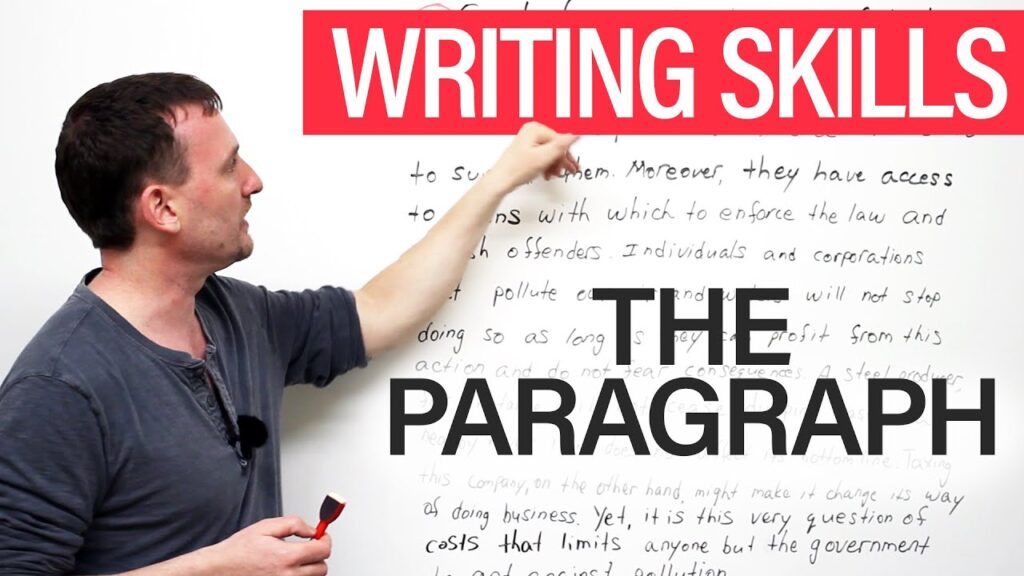In the vast realm of academia, where ideas flow and knowledge is shared, the art of crafting an essay holds a significant place. However, even the most brilliant ideas can be lost in a sea of complex sentences and convoluted structures, rendering them inaccessible to readers. That’s where the importance of readability in essays emerges as a guiding light, illuminating the path for effective communication.
Before we embark on this adventure of crafting readable essays, it’s worth mentioning that this article is presented to you with the support of the Canadian Essay Writing Service, a trusted platform dedicated to assisting students and professionals in achieving excellence in their written work.

Source: freepik.com
At its core, readability encompasses the ease with which readers can understand, absorb, and engage with written content. It encompasses elements such as sentence structure, vocabulary, paragraph organization, and overall coherence. A readable essay ensures that the message resonates with the reader, leaving a lasting impact.
In light of this, the purpose of this article is to delve into the realm of enhancing readability in your essays through the utilization of effective writing techniques. Whether you’re a student striving to articulate your thoughts with clarity or a professional seeking to convey your ideas persuasively, this article aims to equip you with the tools to captivate your readers.
While it’s crucial to develop your writing skills independently, seeking guidance from trusted sources can be invaluable in refining your approach. With that in mind, we invite you to embark on this journey of mastering readability, hand in hand with the insights shared here. As the world evolves, so too does the need for clear and compelling communication.
Therefore, let us explore the realm of enhancing readability, with the aid of effective writing techniques, all while keeping in mind the value of connecting with your readers. Along this journey, we will uncover strategies, tips, and tricks to breathe life into your words and engage your audience effectively.
Now, let’s embark on this transformative journey of enhancing readability in your essays and unlocking the power of effective communication.
Understanding Readability

Source: wyliecomm.com
Defying the boundaries of mundane text, readability breathes life into essays, captivating readers with its effortless flow and clarity. So, what exactly is readability? It is the symphony of words and structure that allows readers to seamlessly navigate through your essay, absorbing the essence of your ideas. Factors such as sentence structure, vocabulary, and coherence contribute to this harmonious dance, shaping the reading experience.
The significance of readability extends beyond mere aesthetics. It forms the bridge between your thoughts and the minds of your readers. By crafting a readable essay, you enable your ideas to transcend the limitations of ink and paper, finding resonance with those who engage with your work. Readability empowers you to convey complex concepts with ease, fostering understanding, and igniting a sense of connection between author and reader.
Simplifying Sentence Structure

Source: freepik.com
Simplicity in sentence structure is key to achieving readability. Complexity often breeds confusion, leading readers down a labyrinth of convoluted clauses. Instead, opt for simplicity by avoiding intricate sentence structures that can derail comprehension. Let your sentences breathe, allowing your ideas to take center stage without being overshadowed by complexity.
Just as an iPhone’s interface is designed with clarity in mind, your language should be clear and concise. Trim the excess, eliminate verbosity, and present your ideas in a straightforward manner. Choose words that are precise and evocative, creating a seamless connection between your thoughts and the reader’s understanding. Remember, clarity is the cornerstone of readability.
In the realm of sentence structure, the active voice is the shining star. It infuses your writing with energy and vitality, putting your ideas into motion. By using the active voice, you ensure that the subject of your sentence takes the lead, driving the narrative forward. Passive voice, on the other hand, can muddle the clarity of your message and dilute the impact of your words.
Enhancing Paragraph Structure

Source: youtube.com
Just as the chapters of a thrilling novel entice readers to turn the pages, topic sentences serve as guiding beacons in your essay. They encapsulate the essence of each paragraph, providing readers with a roadmap to navigate through your ideas. Like a well-orchestrated symphony, topic sentences harmonize the various sections of your essay, ensuring a cohesive and engaging reading experience.
Imagine paragraphs as stepping stones, seamlessly leading readers from one idea to the next. Logical transitions are the mortar that holds these stepping stones together. With finesse and precision, they establish the connections between paragraphs, allowing ideas to flow effortlessly. These transitions can be as graceful, effortlessly guiding readers through the logical progression of your essay.
In a world of fleeting attention spans, brevity becomes the key to capturing and retaining readers’ interest. Concise paragraphs make an impact by focusing on the core of your message. Avoid tangents and digressions, staying laser-focused on the central idea of each paragraph. By doing so, you maintain the momentum, making your essay an immersive experience rather than a daunting labyrinth of words.
Utilizing Effective Vocabulary

Source: freepik.com
The art of selecting words is akin to choosing the perfect brushstroke to convey an emotion in a painting. Just as an artist meticulously selects each color, you must choose appropriate and precise words that resonate with your intended message. Each word should serve a purpose, evoking imagery and emotion, while maintaining clarity and readability. Let your vocabulary be a palette of hues, painting vivid pictures in the minds of your readers.
Like a skilled communicator, avoid jargon and technical terms that may alienate your audience. Instead, strive for inclusivity and accessibility by using language that is universally understood. Your essay should be easily relatable, transcending barriers of specialized knowledge. Ensure that your words are a bridge, connecting readers to your ideas, rather than an obstacle that erects barriers to understanding.
Sometimes, even the most eloquent essays delve into the realm of complex concepts. In these instances, be a considerate guide, providing definitions for specialized terms that may be unfamiliar to your readers. Just as the built-in dictionary feature on an iPhone clarifies unknown words, your definitions shed light on the intricacies of your subject matter. By offering explanations, you empower readers to grasp the nuances and appreciate the depth of your ideas.
Incorporating Visual Elements

Source: owlcation.com
In the realm of essay writing, visual elements can serve as powerful allies in capturing and retaining readers’ attention. Bullet points and numbered lists act as signposts, guiding readers through key points with clarity and efficiency.These visual elements structure your information, making it digestible and visually appealing.
When complexity demands clarity, tables, graphs, and diagrams step onto the stage, showcasing data and relationships visually. Whether you’re presenting statistical information, illustrating a process, or comparing variables, these visual aids add depth and understanding to your essay. They bring life to numbers, allowing readers to grasp the significance at a glance.
While visual elements can enhance the aesthetics of your essay, their true power lies in their ability to enhance understanding. Your visual elements should seamlessly integrate with your written content, reinforcing your message and providing visual reinforcement. Ensure that each visual element serves a purpose, complementing your words and deepening readers’ comprehension.
Tips for Readability in Specific Essay Types

Source: freepik.com
Academic essays require a balance of precision and clarity. In academic writing, prioritize logical organization, rigorous evidence, and adherence to citation standards. Develop a coherent argument, support it with credible sources, and maintain an objective tone. Clarity is paramount, ensuring that your ideas are accessible to your academic audience.
Persuasive essays aim to sway hearts and minds. Engage your readers through compelling storytelling, emotional appeal, and well-reasoned arguments. Structure your essay with a clear introduction, body paragraphs that build a persuasive case, and a strong conclusion that leaves a lasting impact. Employ rhetorical devices, anticipate counterarguments, and evoke empathy to enhance the persuasive power of your writing.
Informative essays strive to educate and enlighten readers. Provide clear and accurate information, presenting facts in a logical and engaging manner. Organize your essay based on a coherent structure, ensure your sources are reliable, and explain complex concepts in a relatable manner. Maintain a balanced tone, allowing your readers to absorb knowledge with ease.

Source: freepik.com
By simplifying sentence structures, utilizing effective vocabulary, and enhancing paragraph structure, you can transform your essays into captivating narratives that effortlessly guide readers through your ideas. Incorporating visual elements such as bullet points, tables, and graphs adds depth and clarity, while adhering to specific tips for different essay types ensures your writing aligns with academic, persuasive, or informative goals.
Remember, readability is not merely about aesthetics but about forging a profound connection between the author and the reader. It is through readability that your ideas can transcend the boundaries of ink and paper, resonating with readers, and leaving a lasting impact.



